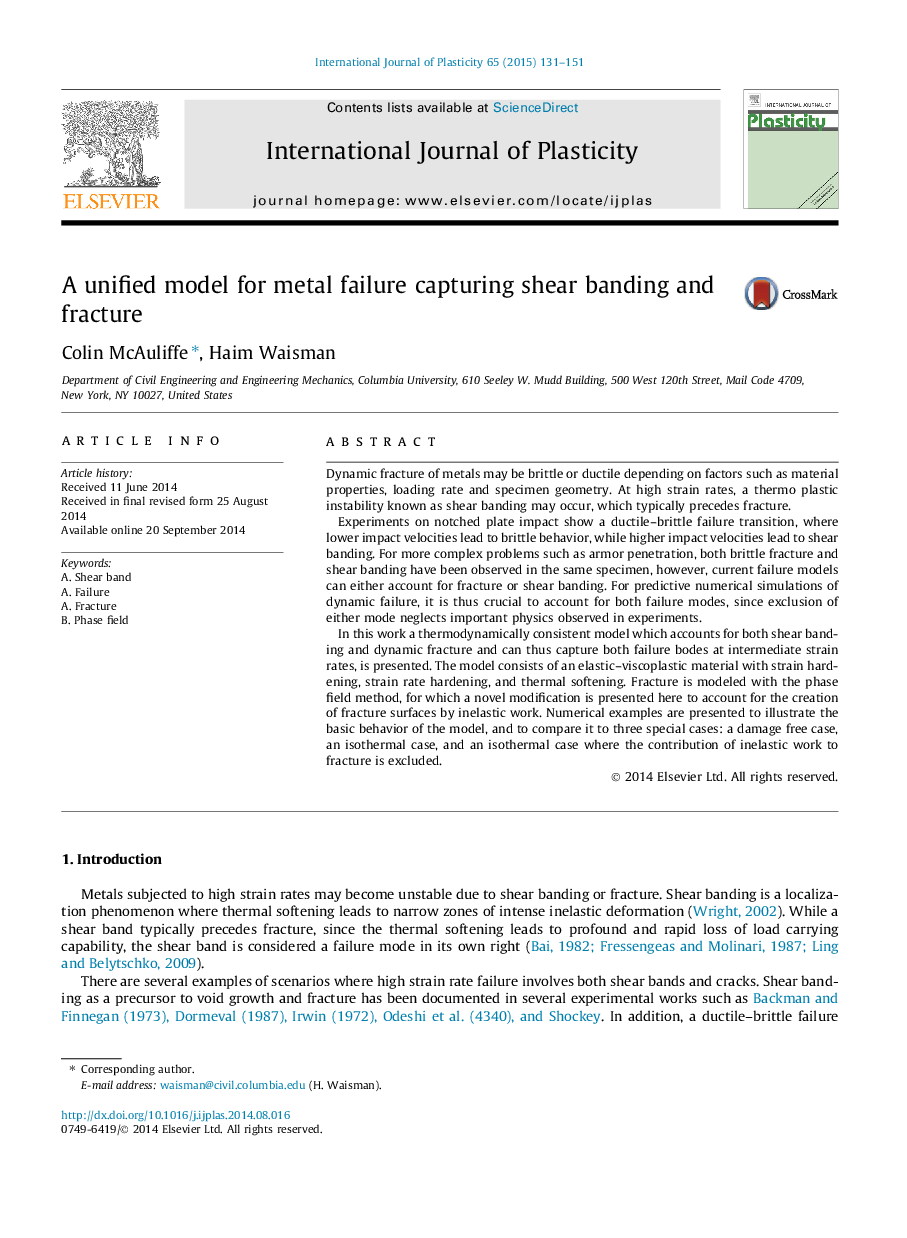| کد مقاله | کد نشریه | سال انتشار | مقاله انگلیسی | نسخه تمام متن |
|---|---|---|---|---|
| 786112 | 1465608 | 2015 | 21 صفحه PDF | دانلود رایگان |
• A thermodynamically consistent model which accounts for both shear banding and dynamic fracture in metals is presented.
• The model is unique as it can capture a wide range of strain rate loadings including ductile to brittle transition.
• Current failure models can either account for fracture or shear banding (not both).
• Fracture is modeled with the phase field method.
• A novel modification for phase field is presented to account for fracture due to inelastic work.
Dynamic fracture of metals may be brittle or ductile depending on factors such as material properties, loading rate and specimen geometry. At high strain rates, a thermo plastic instability known as shear banding may occur, which typically precedes fracture.Experiments on notched plate impact show a ductile–brittle failure transition, where lower impact velocities lead to brittle behavior, while higher impact velocities lead to shear banding. For more complex problems such as armor penetration, both brittle fracture and shear banding have been observed in the same specimen, however, current failure models can either account for fracture or shear banding. For predictive numerical simulations of dynamic failure, it is thus crucial to account for both failure modes, since exclusion of either mode neglects important physics observed in experiments.In this work a thermodynamically consistent model which accounts for both shear banding and dynamic fracture and can thus capture both failure bodes at intermediate strain rates, is presented. The model consists of an elastic–viscoplastic material with strain hardening, strain rate hardening, and thermal softening. Fracture is modeled with the phase field method, for which a novel modification is presented here to account for the creation of fracture surfaces by inelastic work. Numerical examples are presented to illustrate the basic behavior of the model, and to compare it to three special cases: a damage free case, an isothermal case, and an isothermal case where the contribution of inelastic work to fracture is excluded.
Journal: International Journal of Plasticity - Volume 65, February 2015, Pages 131–151
